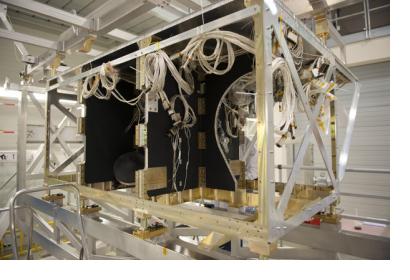ESA’s Galileo services are set to be released to the market this year. ESA is working therefore directly with the Satnav technology producers to ensure their preparedness to work with the services.
“Our objective is to make sure, ahead of the EU’s declaration of early Galileo services that mass-market devices are ready and able to make use of them,” explained Riccardo de Gaudenzi, head of ESA’s Radio Frequency Systems, Payload and Technology Division.
Key facilities being used at ESA’s Navigation Laboratory include its state-of-the-art ‘hybrid localization solution rack’, where receiver chips can be plugged in. The rack generates simulated constellations of Galileo, GPS and other satnav systems. It can also force positioning even when satellites are out of view.
Whether they are being used for vehicle navigation, shipment navigation or precision agriculture, the performance of satnav terminals comes down to the specialized chips embedded within them. The same is true of mobile phones, although their chips tend to be optimized for low-power, high-sensitivity operations.
Thanks to earlier cooperation multi-constellation satnav chips have been equipped for Galileo signals since 2009. This time the cooperation between the agency and the manufacturers will mainly allow them to optimize the software, so it is adapted to the services and signals received with the background information. This will increase their accuracy and usefulness of Galileo data.

